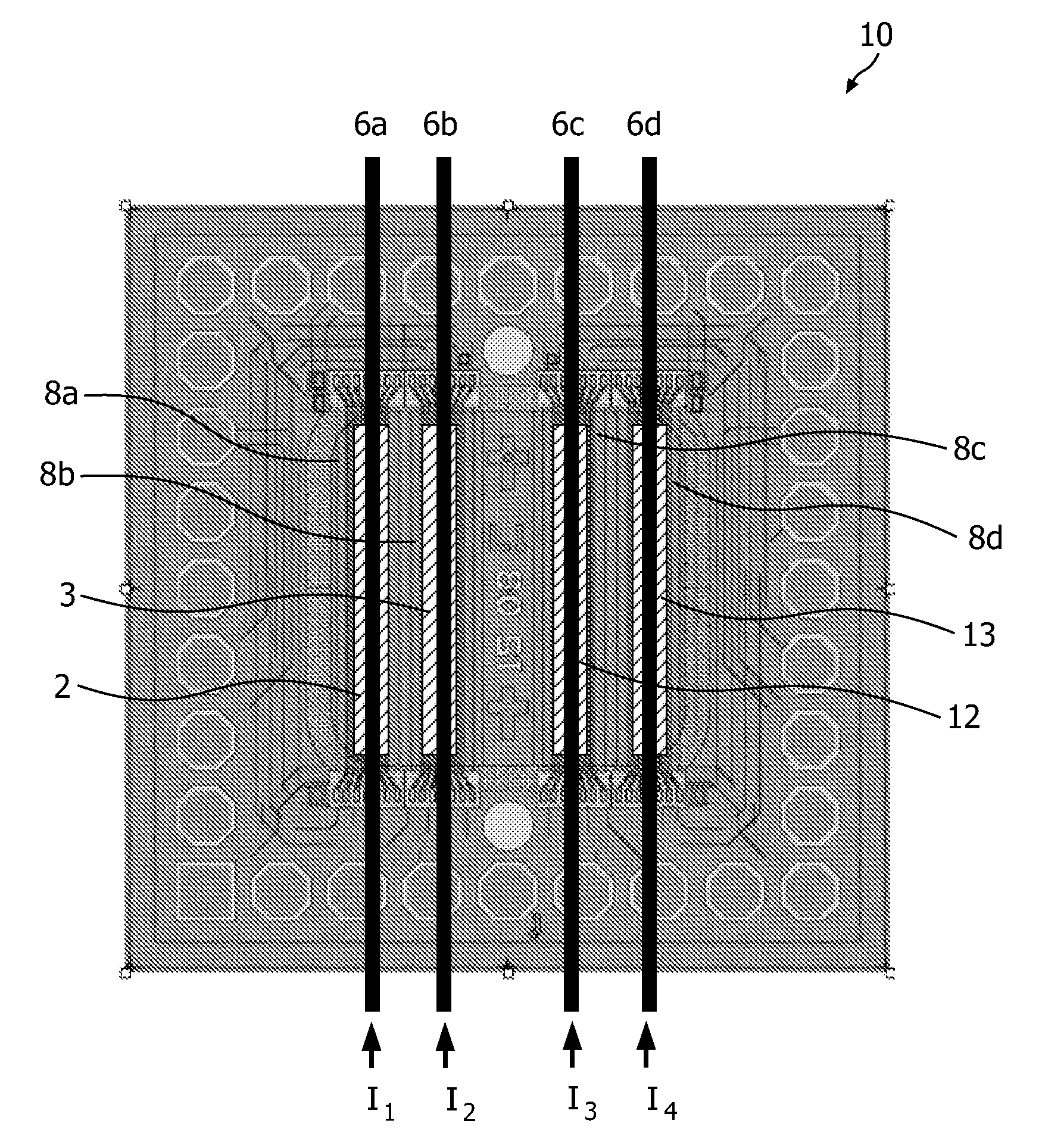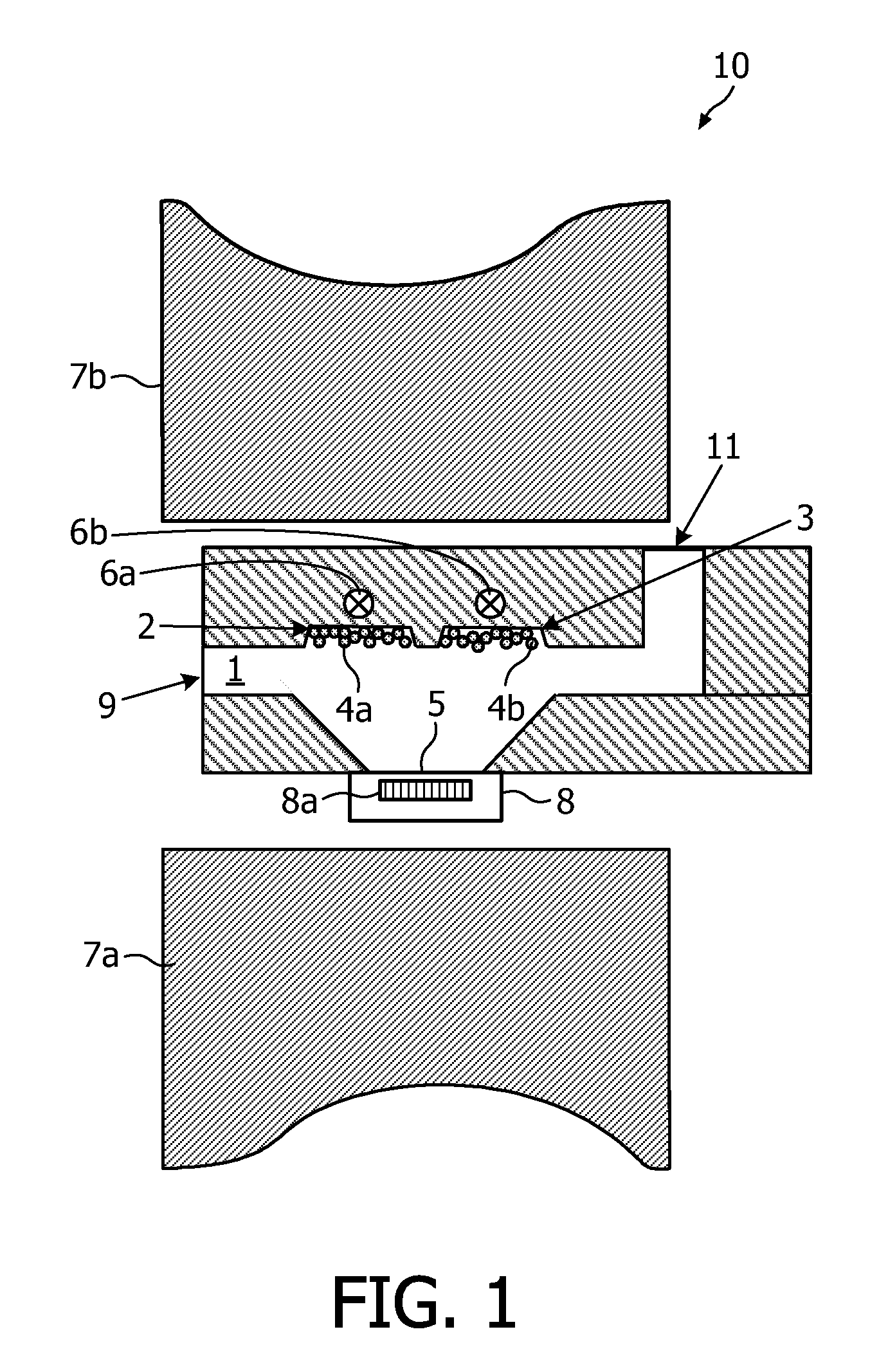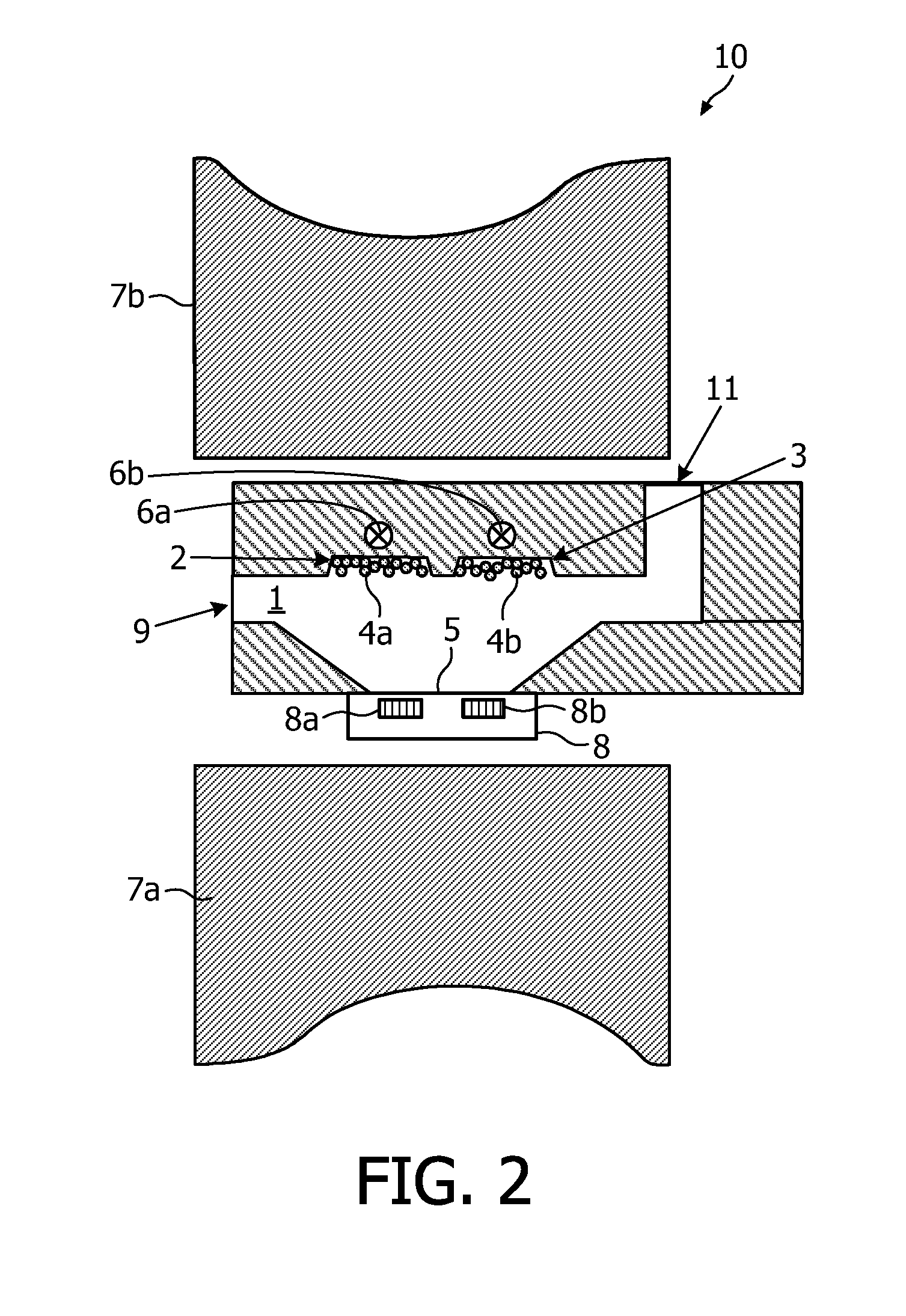Sensor cartridge
a technology of sensor cartridges and cartridges, applied in the field of sensor cartridges, can solve the problems of requiring a lot of time and knowledge, requiring a lot of time and effort, and requiring a lot of time and effort, and achieve the effect of reducing the possibility of cross-reactions
- Summary
- Abstract
- Description
- Claims
- Application Information
AI Technical Summary
Benefits of technology
Problems solved by technology
Method used
Image
Examples
first embodiment
[0080]FIG. 1 illustrates a sensor cartridge 10 according to the present invention. The sensor cartridge 10 comprises a reaction chamber 1. The reaction chamber 1 is for receiving a sample fluid to be tested, the sample fluid comprising at least two different target moieties. The reaction chamber 1 may, according to this embodiment, comprise a first region 2 and a second region 3, the second region 3 being distinct from the first region 2. It is to be noted that the scope of the invention is not limited to only two distinct regions. Any number of regions larger than or equal to 2 is within the scope of the present invention. The first region 2 comprises a first type of magnetic particles, i.e. magnetic particles 4a labelled with a first type of probes (not shown) for specifically binding the magnetic particles 4a to a first type of target moieties and thus for specifically binding them to a first type of target homologues which may be present at the surface 5 of a sensor substrate 8....
second embodiment
[0106]According to this second embodiment, cross-reaction may be reduced because the number of magnetic particles 4a, 4b that diffuse away from the corresponding sensor element 8a, 8b, . . . will be small.
diffusion length or distance x that a magnetic particle 4a, 4b travels in a certain time t is given by:
x=2Dtπ(1)
[0107]For example, a magnetic particle with a diameter of e.g. 300 nm may travel on average 10.5 μm due to Brownian motion.
[0108]Therefore, preferably, the distance between neighbouring regions 2, 3 may be between 10 μm and 1000 μm, more preferably between 50 μm and 500 μm and most preferably between 100 μm and 250 μm for particles with a diameter or size of 300 nm in samples with viscosity in the range of 1 mPa in order to avoid the first type of magnetic particles 4a to bind to the second GMR element 8a and vice versa (see further). It has to be noted that the diffusion length depends on the particle size and on the viscosity of the sample fluid. For example, when magne...
third embodiment
[0116]Distinct determination of the presence and / or amount of the first, second, . . . type of target moieties, according to this third embodiment, may be obtained by the presence of a control means for selectively releasing the first type of magnetic particles 4a, the second type of magnetic particles 4b, . . . from respectively the first region 2, the second region 3, . . . into the reaction chamber 1. This may be obtained by a control means, e.g. magnetic field generating means such as current wires, for selectively releasing the different types of magnetic particles 4a, 4b, 4c, 4d from their respective regions 2, 3, 12, 13. The current wires 6a-d needed for the selective release of magnetic particles 4a, 4b, 4c, 4d can also be used for actuation during the printing process. In this way, magnetic particles 4a, 4b, 4c, 4d can be transported to correct positions when the current wires 6a-d are activated during application of the magnetic particles 4a, 4b, 4c, 4d. The time between t...
PUM
| Property | Measurement | Unit |
|---|---|---|
| width | aaaaa | aaaaa |
| length | aaaaa | aaaaa |
| size | aaaaa | aaaaa |
Abstract
Description
Claims
Application Information
 Login to View More
Login to View More - R&D
- Intellectual Property
- Life Sciences
- Materials
- Tech Scout
- Unparalleled Data Quality
- Higher Quality Content
- 60% Fewer Hallucinations
Browse by: Latest US Patents, China's latest patents, Technical Efficacy Thesaurus, Application Domain, Technology Topic, Popular Technical Reports.
© 2025 PatSnap. All rights reserved.Legal|Privacy policy|Modern Slavery Act Transparency Statement|Sitemap|About US| Contact US: help@patsnap.com



